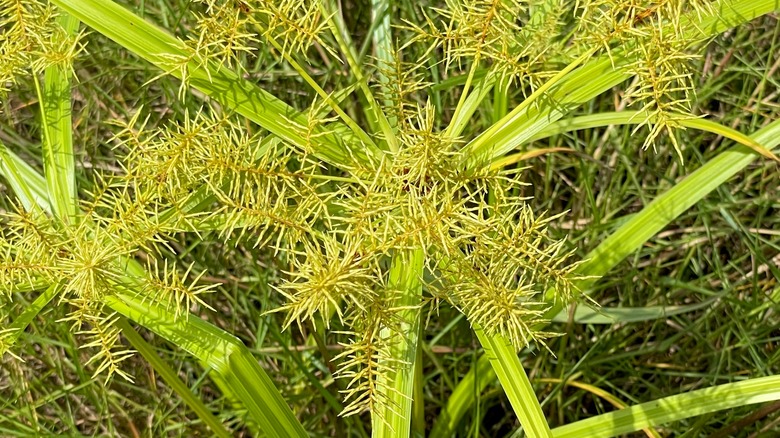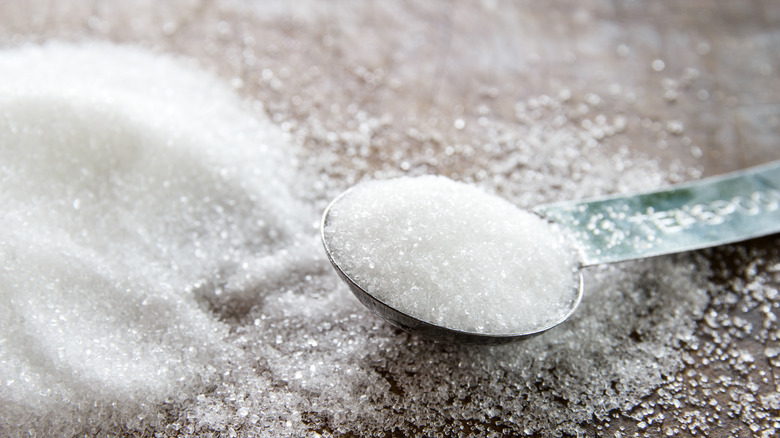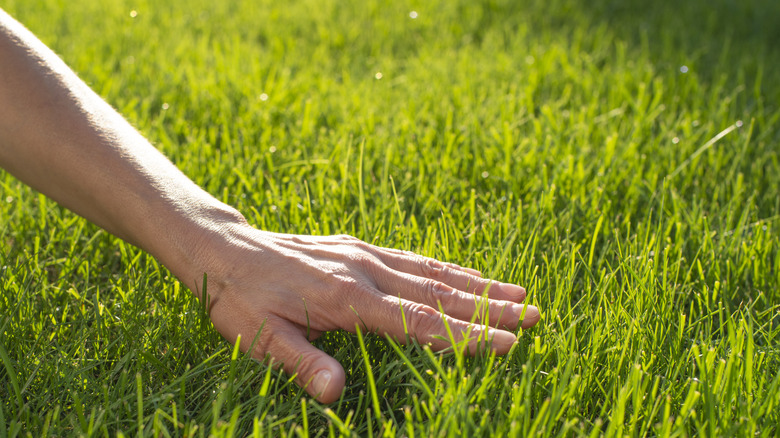The Common Baking Ingredient That Wipes Out Invasive Nutsedge
Invasive plants aren't just bad for your garden; they're also harmful to your local ecosystem. Nutsedge, also known as nutgrass, is a particularly invasive lawn weed that grows faster than most grass. It can take over a lawn or garden, forcing out native species and other desirable plants. Fortunately, the solution to this pesky problem is likely already in your kitchen.
Nutsedge is native to Africa but is now a common sight in lawns all over the world. It can be identified by its triangular stem and long yellow-green leaves that mimic grass. If you see yellowish "grass" spreading among the green, inspect it to see if you have invasive nutsedge.
Nutsedge is notoriously difficult to get rid of because it spreads underground and will keep coming back if you pull up individual plants. However, you can use sugar to kill it. This way, you'll avoid harsh herbicides while saving your lawn from the invasion.
How sugar kills nutsedge
Sugar is not only effective against nutsedge but is also a good general weed killer. This is due to sugar's high carbon content, which depletes the soil's nitrogen. As a result, local microbes grow faster and consume the nitrogen, making it less available for weeds to grow.
However, it is important to note that all plants require nitrogen to grow, so using too much sugar can kill everything around them. A small amount of sugar can go a long way in making the environment less conducive to weeds like nutsedge. Pulling up these plants will not harm their underground structures, which they use to spread. However, if sugar is used to remove nitrogen from the soil, nutsedge will gradually die off.
It is important to avoid using this technique in a garden full of delicate flowers or vegetables that require nitrogen-rich soil. However, for your lawn, sugar is an effective way to eliminate nutsedge without posing a major threat to the grass you want to keep.
Using sugar for a healthy lawn
There's no need to make a special shopping trip for this method. You can just use ordinary white sugar from your kitchen. If you don't have any, get the cheapest option from the store since you'll be using a lot of it. For every 10 square feet of nutsedge, you'll need about 4 or 5 pounds of sugar. The more established the nutsedge is, the harder it will be to kill. Try to catch this problem while the plants are still young, in the spring when the growing season starts. That's the ideal time to apply sugar.
Wait for a dry day without rain and after the dew has evaporated, so the water won't dissolve your sugar. Then, spread your sugar evenly across the affected area, adding a little water on top so the sugar gets damp but not wet. That'll keep the sugar from blowing around in the wind. It'll gradually sink into the soil, feeding microbes and depleting the nitrogen keeping that nutsedge alive.
Once the nutsedge is gone, you may need to re-seed or fertilize the lawn to help your grass grow back. A thick, healthy lawn will help keep weeds away by giving them no space to grow.


